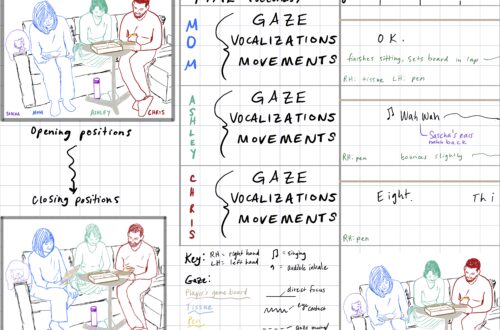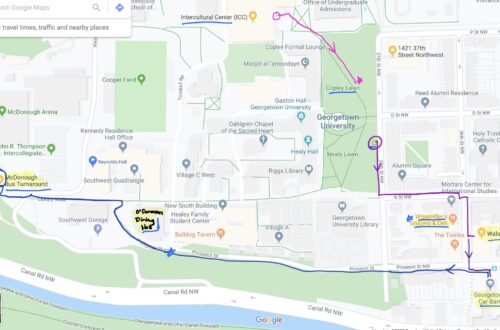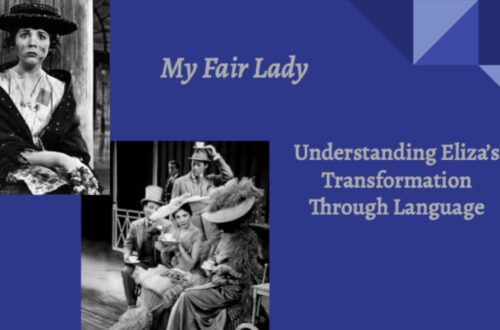Linguistic Landscapes of Inclusion
Georgetown University, 2020. Linguistics.
[Sharing below a recent assignment from my General Linguistics summer course, where we were asked to observe and analyze certain elements of our linguistic landscape (because of COVID-19, much of this moved online).]
Linguistic landscapes concern the language we see and hear around us every day – from official sources to advertisements to graffiti and personal conversations. From my professor:
“Linguistics landscape study involves the systematic investigation of public language and how it may illuminate such sociolinguistic concerns as language and power, language and immigration, language and globalization, language maintenance and shift, language and politics, language and economic factors, and language and cultural, interpersonal, and personal identity.”
Natalie Schilling
We created a course website to share our work; below is my contribution to the site:
Over the past few years, I have noticed an increasing number of yard signs promoting inclusivity popping up in neighborhoods across the US. Most of those featured on this website were crafted in response to emerging sociopolitical issues; some exclusively use English (often with graphics that represent diverse populations), while others – particularly those addressing immigration – include several languages.
Scollon and Scollon (2003) discuss how location, historical timing, and materials used for creating the elements of our linguistic landscape impact the messages and associations we take away from what we see. Though displays by governmental and other ‘official’ bodies may lend more authority, those erected by private citizens and groups likewise contribute significantly to a community’s landscape. Signs like the ones shown here can be effective in helping draw attention to the human-ness and individuality of people who are, at times, lumped into a de-humanized (and divisive) political issue.
Though some have criticized the use of such signs in front of private homes, I believe their placement at religious institutions, in particular, is very appropriate, as some religious groups are known to hold contrary beliefs to certain of these messages. For this reason, I have given additional focus to signage on Christian church property.
Glad You’re Our Neighbor
The first inclusivity sign I remember noticing in front of private homes was very similar to the one below:

I particularly like this picture because not only does it show a sign in 3 languages (Spanish, English, Arabic), it also shows the signage of the church on whose property it was displayed (Shalom Mennonite Church in Newton, KS). Though “Shalom” is only written with English letters, it introduces a Hebrew word. It further interests me because the languages used and location of the sign make me think of several major religions, plus a few denominations within Christianity.
Focusing just on this sign:
Given that this is a sign promoting inclusivity, I imagine significant consideration was given to design and word choice. I speak neither Spanish nor Arabic, so I can’t comment on translations or wording (formality, gender, etc.). As far as I know, this is a sign designed for use throughout the US, and the choice of languages, as well as their depiction, seems sensible and sensitive. Using Spanish and Arabic on a sign with this message seems targeted to confront several current political positions. Placing our country’s dominant language between the other two to me feels very inclusive, as if English speakers had an arm around speakers of the other languages. The prominence of each language seems similar:
- The higher color contrast used for English might make it easier to read; the font also takes up more space than the Spanish.
- Placing Spanish on top could seem to favor it (top-to-bottom being the direction we usually read signs); using a slightly-smaller italicized font for Spanish may have been the only way to give the final lines of Spanish and English parallel wording (nuestro vecino/our neighbor). Having the final lines contain the exact same expression draws further attention to the sentiment.
- Of these colors, orange is the one that most draws my eye – possibly favoring Arabic. Unfortunately, I (and probably most people in the US) am not familiar at all with Arabic – but this also encourages me to read the rest of the sign – and to ponder its message.
In researching this sign, I found that it was created in response to content from the 2015 US Presidential primaries; its first iteration appeared in September 2015 (photo below). Matthew Bucher, the pastor of Immanuel Mennonite Church (Harrisonburg, VA), stated: “I wanted to make a statement in the historically African-American part of the city, and in a part of the city where a lot of new immigrants from the Middle East and Central and South America are coming, that ‘We’re glad you’re here, and we’re going to show Christ’s love to you as neighbors.’”

The sign is now part of the creative commons and has been redesigned to include languages common in other communities where it is displayed, including:


All Are Welcome
I am unsure for how many years this sign at Church of the Pilgrims, near Dupont Circle in Washington, DC, has been displayed – but I noticed it in late 2012, when I first attended services there. While the church also supports the messages of the previous signs, this display targets a different population than the others – though this is communicated solely through the graphics, rather than the text:

Though the text of this sign, “All Are Welcome,” expresses a similar message as the “Neighbor” signs, by depicting the Rainbow Flag, it clearly addresses the LGBTQ community, whose members have historically been more excluded from many churches than immigrant and refugee populations. Thus, merely from the signage, different conclusions could be drawn about who may feel comfortable in this church versus those displaying the previous messages. In terms of the choice to use English exclusively, I imagine considerations of brevity were prioritized; further, as the LGBTQ community likely encompasses speakers from all of the world’s languages, this group can more easily be identified by their graphics. Landry and Bourhis (1997) focused on the presence of one’s language being represented on signage as it relates to vitality, belonging, and a positive sense of identity, though I believe their findings correlate just as appropriately to graphic representations of communities.
My final signs also appear exclusively in English and relate to recent issues: Black Lives Matter and Coronavirus. The first is not one that I have seen in person, though in the past months, I have seen many home-made signs expressing similar sentiments:
Hate Has No Home Here

This yard sign is for sale on Amazon and currently has a 4.9 (out of 5)-star rating from 12 reviewers. All of the reviews were written in July 2020, so it seems to be a new product, designed most-specifically to support the Black Lives Matter movement – though it also features graphics that include other causes and groups, including the LGBTQ community (once again, by referencing the Rainbow Flag). In addition to the text, “BLACK LIVES MATTER,” the message that appears above the graphics, in large, rainbow letters, is inclusive of many issues: “HATE HAS NO HOME HERE.”
In This Together

This sign, from late March 2020, expresses a sense of community resilience through language that unites local residents during the Coronavirus pandemic. Though the full intentions of the owners of this sign cannot be gauged, its perlocutionary force for me includes messages not only of coming together in support, but also of considering the impacts of our individual behavior on our larger society – for example, when choosing to wear a mask (or not); or when welcoming individuals from different backgrounds (or not).
Signs like these demonstrate ways individuals, communities, and movements use language to adapt to challenges and express solidarity. Linguistic landscapes can go a long way in helping promote positive values and support for causes and people.
References:
Landry, Rodrigue; Richard Y. Bourhis (1997). “Linguistic Landscape and Ethnolinguistic Vitality An Empirical Study”. Journal of Language and Social Psychology. 16 (1): 23–49. doi:10.1177/0261927X970161002.
Scollon, Ron; Scollon, Suzie Wong (2003). Discourses in Place: Language in the Material World. Routledge. ISBN 9781134436903.
Photographs (in order of appearance):
Shalom Mennonite Church sign and article: http://mennoworld.org/2016/12/27/news/yard-signs-all-neighbors-welcome-here/
Immanuel Mennonite Church sign and article: https://themennonite.org/daily-news/welcome-neighbor-signs-spread-across-country/
Emmanuel Mennonite Church sign: https://www.emmanuelmennonitechurch.com/
Vallejo Together sign: https://www.facebook.com/vallejotogether/photos/inclusivity-poster-from-back-east-now-found-in-vallejoby-rachel-raskin-zrihenrzr/10158191532560077/
Church of the Pilgrims: Photo by Alex Tucker. https://goo.gl/maps/s6Qof8M2ucxn8WYX7
Black Lives Matter sign from Little FootPrint: https://www.amazon.com/Little-FootPrint-Hate-Home-Stakes/dp/B08BJ5VGQD/ref=sr_1_21_sspa?crid=QH8VF6RO7WTV&dchild=1&keywords=inclusivity%2Byard%2Bsign&qid=1595976619&sprefix=inclusivity%2B%2Caps%2C214&sr=8-21-spons&spLa=ZW5jcnlwdGVkUXVhbGlmaWVyPUFTMUpESDJBTVM2VzgmZW5jcnlwdGVkSWQ9QTA3OTIwNzMzRTc3WjhEN0pRQTVVJmVuY3J5cHRlZEFkSWQ9QTA2MDI3NDExWUMyMFc0UzQ3OVc5JndpZGdldE5hbWU9c3BfbXRmJmFjdGlvbj1jbGlja1JlZGlyZWN0JmRvTm90TG9nQ2xpY2s9dHJ1ZQ&th=1
Augusta: TBonz Steakhouse: https://www.forbes.com/sites/soniathompson/2020/03/30/reactions-to-covid-19-threaten-gains-in-diversity-inclusion-and-belonging-how-to-keep-your-brand-on-track/#789348d56cea


